Table of Contents
Subject-Verb Agreement refers to the grammatical rule that the subject and verb in a sentence must match in number. A singular subject requires a singular verb, while a plural subject takes a plural verb.
This rule ensures clarity and correctness in writing and speaking. Proper agreement improves sentence structure and avoids confusion in communication.
What is Subject-Verb Agreement?

Subject-Verb Agreement means the subject and verb in a sentence must match in number and person. A singular subject takes a singular verb, and a plural subject takes a plural verb.
For Example:
The cat runs fast. (Singular subject: cat, singular verb: runs)
The cats run fast. (Plural subject: cats, plural verb: run)
Rules of Subject-Verb Agreement
1. Singular and Plural Subjects
A singular subject takes a singular verb, while a plural subject takes a plural verb.
- She enjoys reading.
- They enjoy reading.
2. Compound Subjects
When two singular subjects are joined by and, they take a plural verb.
- Ayesha and Hamza are going to school.
However, if the subjects refer to the same person or thing, a singular verb is used.
- Bread and butter is my favorite breakfast.
3. Subjects Separated from Verbs
Words like along with, as well as, and in addition to do not change the number of the subject.
- Ali, along with his friends, is watching TV.
4. Indefinite Pronouns
Indefinite pronouns such as everyone, someone, and nobody are always singular and take a singular verb.
- Everyone wants to succeed.
Some indefinite pronouns like both, few, many, and several take a plural verb.
- Few know the truth.
5. Subjects That Come After the Verb
In questions and sentences starting with here or there, the verb agrees with the subject that follows it.
- There are many books on the table.
- Where is your brother?
6. Numbers and Amounts
Amounts and measurements are usually singular.
- Ten dollars is enough.
However, if the amount is seen as individual units, a plural verb is used.
- Ten dollars were scattered on the table.
7. Collective and Uncountable Nouns
A collective noun can take either a singular or plural verb, depending on whether the group is seen as a unit or individuals.
- The team is playing well.
- The team are arguing among themselves.
Uncountable nouns always take singular verbs.
- Water is essential for life.
8. Abbreviations and Acronyms
Abbreviations and acronyms follow the same subject-verb agreement rules.
- NASA has launched a new mission.

Agreement with ‘There is’ and ‘There are‘
The verb in sentences starting with there must agree with the subject that comes after the verb. The word there is not the subject; it is simply a placeholder. The subject follows the verb, and the verb must match the subject in number.
- There is a book on the table. Here, the subject is a book, which is singular, so the verb is is used.
- There are many books on the table. Here, the subject is many books, which is plural, so the verb are is used.
This rule applies regardless of the tense. For example:
- There was a meeting yesterday. (Singular subject: a meeting)
- There were many people at the event. (Plural subject: many people)
Subject-Verb Agreement with “Quantifiers“
Quantifiers like some, all, most, none, a lot of, etc., can be tricky because the verb depends on the noun that follows the quantifier. If the noun is singular, the verb is singular; if the noun is plural, the verb is plural.
- Some of the cake is gone. Here, cake is singular, so the verb is is used.
- Some of the cookies are gone. Here, cookies is plural, so the verb are is used.
Another example:
- All of the water has been spilled. (Singular: water)
- All of the students have left. (Plural: students)
This rule helps ensure that the verb agrees with the actual subject, not just the quantifier.
Subject-Verb Agreement in “Relative Clauses“
In sentences with relative clauses (introduced by words like who, which, that), the verb in the relative clause must agree with the antecedent (the noun the clause describes).
- The student who studies hard is likely to succeed. Here, the antecedent is the student, which is singular, so the verb studies is singular.
- The students who study hard are likely to succeed. Here, the antecedent is the students, which is plural, so the verb study is plural.
This rule ensures that the verb in the relative clause matches the number of the noun it refers to.
Subject-Verb Agreement in “Inverted Sentences“
Inverted sentences are those where the subject comes after the verb. This often happens in sentences starting with here, there, or prepositional phrases. Even in these cases, the verb must agree with the subject.
- Here comes the bus. The subject is the bus, which is singular, so the verb comes is singular.
- Here come the buses. The subject is the buses, which is plural, so the verb come is plural.
Another example:
- In the room was a large table. (Singular: a large table)
- In the room were several chairs. (Plural: several chairs)
This rule ensures that the verb agrees with the subject, even when the sentence structure is inverted.
Subject-Verb Agreement in Different Tenses
Subject-verb agreement applies to all tenses (past, present, future). The verb must match the subject in number and person, regardless of the tense.
- She writes a letter. (Present tense, singular subject: she)
- They wrote letters. (Past tense, plural subject: they)
- He will write a letter. (Future tense, singular subject: he)
This rule ensures consistency across all tenses, making it clear who or what is performing the action.
Common Exceptions and Special Cases
There are some exceptions and special cases in subject-verb agreement that do not follow the standard rules. These include:
Titles and Names:
Even if they appear plural, they are treated as singular.
- The Lord of the Rings is a great book. Here, the title is singular, so the verb is is used.
Distances, Time, and Money:
When considered as a single unit, they take singular verbs.
- Ten dollars is enough. Here, ten dollars is treated as a single amount, so the verb is is used.
Words like news, mathematics, physics:
- These words are singular despite ending in s.
These exceptions are important to recognize to avoid common mistakes in subject-verb agreement.
FAQs
1. What is Subject-Verb Agreement in simple terms?
Subject-Verb Agreement means that the verb in a sentence must match the subject in number and person. Singular subjects take singular verbs, while plural subjects take plural verbs.
2. How can I avoid Subject-Verb Agreement mistakes?
To avoid mistakes, always identify the subject and determine whether it is singular or plural. Pay attention to tricky subjects like indefinite pronouns and collective nouns.
3. What are some common Subject-Verb Agreement errors?
Common errors include:
Using plural verbs with singular subjects
(e.g., “She go to school” ❌
instead of “She goes to school” ✅).
Using singular verbs with plural subjects
(e.g., “They is playing” ❌
instead of “They are playing” ✅).
4. Why does “The team is” and “The team are” both work?
When “team” is considered as one unit, use a singular verb: “The team is winning.” When referring to individual members, use a plural verb: “The team are arguing.”
Conclusion
Understanding subject-verb agreement is crucial for grammatically correct sentences. Applying these rules ensures clarity, especially with compound subjects, indefinite pronouns, and collective nouns. Practice with examples to improve accuracy.
You May Also Like



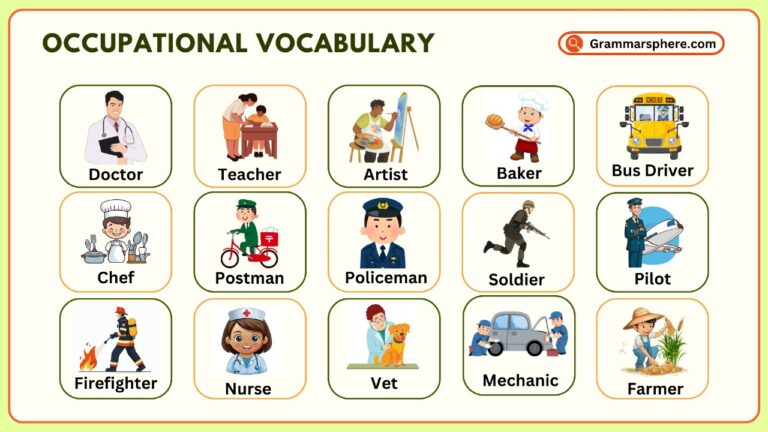
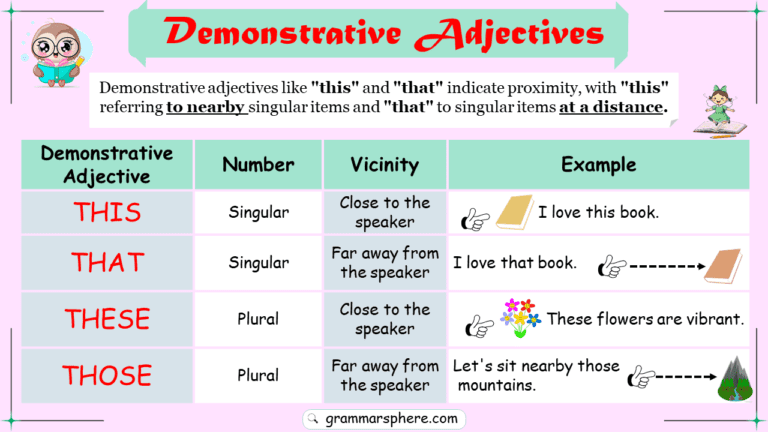

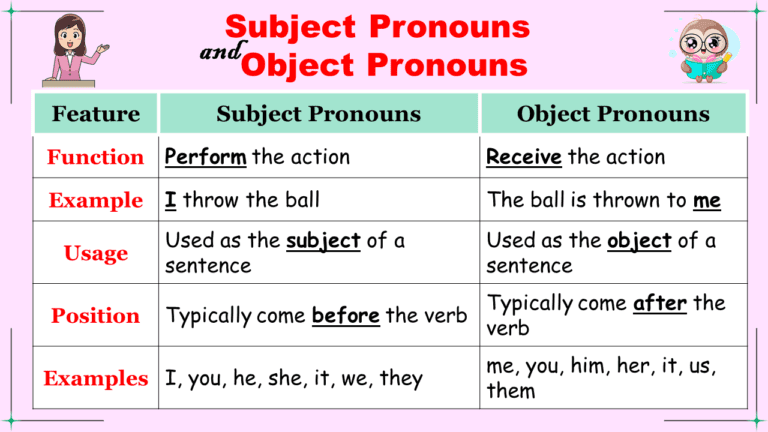
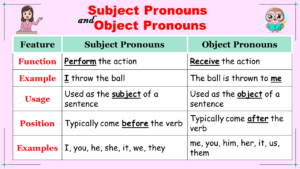
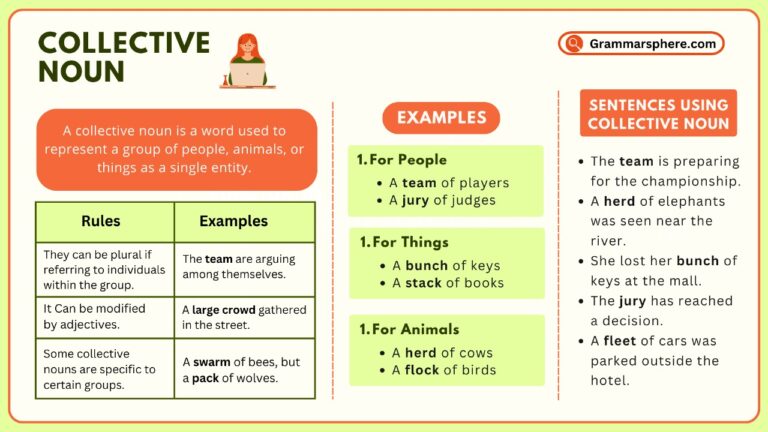
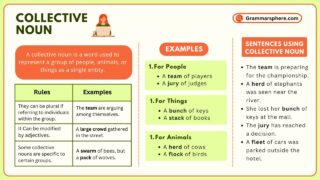
Leave a Comment